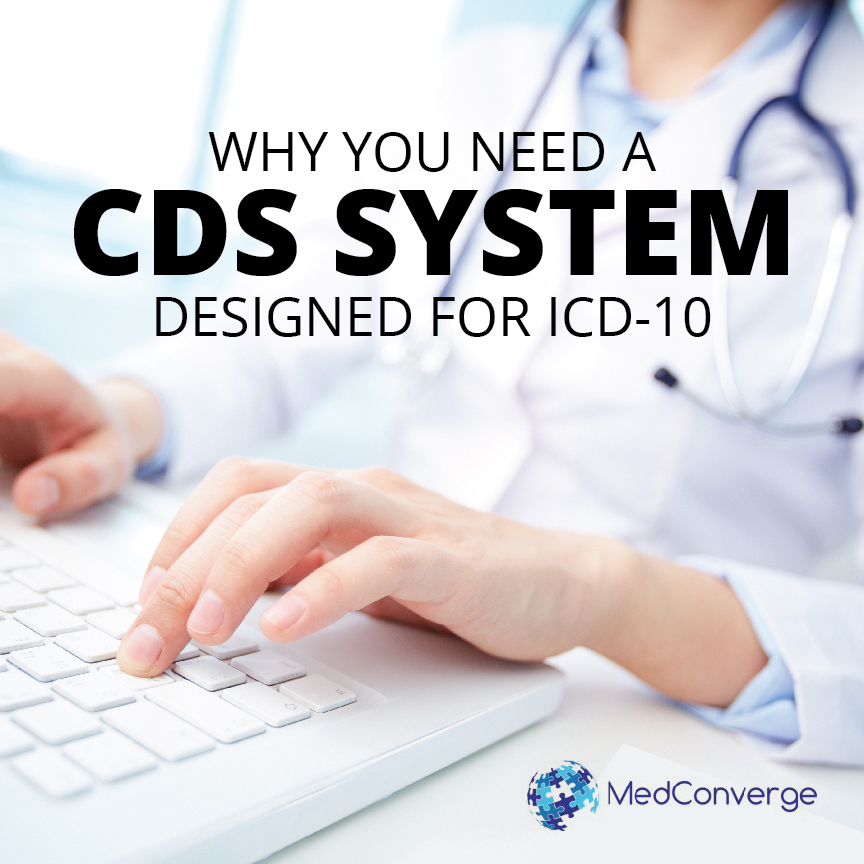The main reason for the transition from ICD-9 to ICD-10 was greater documentation precision. However, if the diagnostics is documented by clinicians at a lower level than what ICD-10 supports, it may result in submission of financial claims that are lower. Such documentation will also cause a patient’s medical record to lack details, resulting in incomplete information for future providers. In order to help resolve these problems, a clinical decision support (CDS) system can be designed for ICD-10 awareness which improves coding data capture and helps deliver ICD-10 specific clinical documentation improvement (CDI). Here are some highlights from a recent article published in ADVANCE by Dr. Strongwater.

Why do you need a CDS system for ICD-10?
The biggest advantage of a CDS system is that it rides on top of the EMR system where it can align clinical decision making with evidence based best practices, thus strengthening the documentation at the very moment that it is recorded into the EMR. With capabilities to align clinical documentation with ICD-10 at the time of recording and alerting clinicians of the chance to utilize more specific ICD-10 codes; the CDS system is a great help to clinicians as it does not require them to memorize and remember the current expanded ICD-10 code set.
The CDI helps in creating a more specific medical record of the patient and allows for submission of a cleaner and complete claim to help the provider with receiving their just dues.
Required CDS capabilities for ICD-10 CDI
In order to be accurate with its CDI, the CDS system must have the ability to not only read, but also interpret structured documentation as well as unstructured free text notes in the patient’s EMR, along with the capability to collect and interpret information coming from test labs and imaging departments. While the ability to read clinical documentation at the recording stage is important, it is more important for the CDS to analyze this documentation relative to its knowledge of the patient and issue corrections to the clinician in real time. A great addition would be providing a pop-up suggestion box within the EMR screen, if there is a need for more details or a change in the reimbursable code. This pop-up box should have the correct code or higher level of detail that can be captured by the clinician from here itself.
One of the biggest advantages of the CDS system is alleviating the need for clinicians to master ICD-10 codes. However, what would help enhance the system even more would be the ability to generate a report that indicates which documentation suggestions were ignored by the clinician. Not only would this help the billing department close any ICD-10 gaps that remain, but would also help in procedure improvements and help the facility to adjust to ICD-10 completely.
Value of the CDS system
The EMR which just records and acts as a repository mechanism for a patient’s medical data is elevated to become a real time advisory system by adding the CDS system. This allows for streamlining the processes, improving patient safety and result in less time taken and lower costs. The CDS system delivers value by providing suggestions of best practices along with a complete clinical record of the patient, thus delivering quantifiable clinical and operational benefits to the organization.



